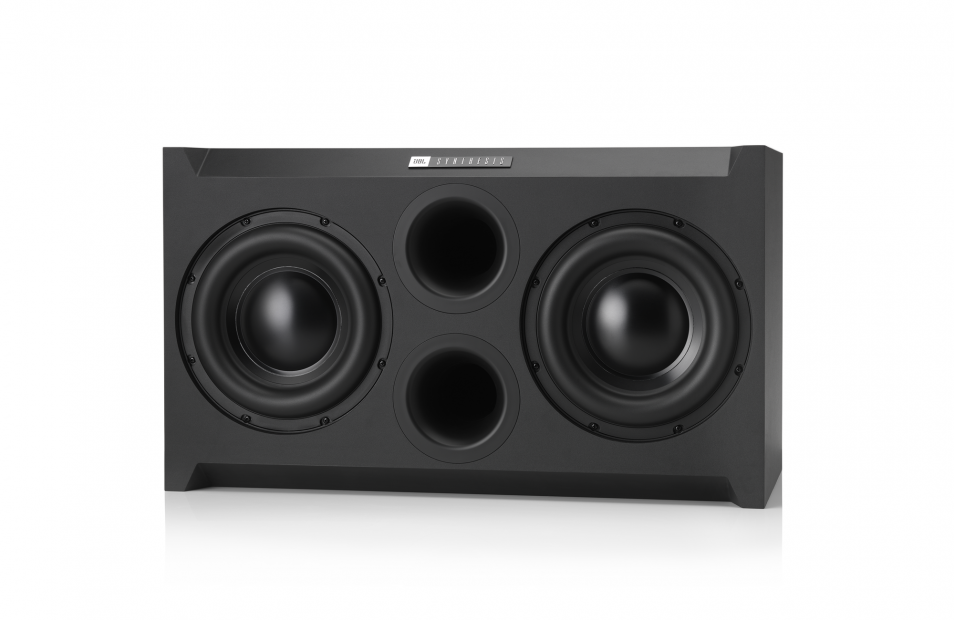Tech Talk
Subwoofers and Driver Size: Is Larger Better?
By Chris Hagen, Principal System Engineer
Over the years, the process of purchasing audio equipment has changed. Consumers used to visit audio shops and listen before purchase. Being able to research and shop on the internet and use readily available spreadsheet software has made a drastic change in the buyer’s habits to more of one comparing tabulated numbers. System complexity has also changed the desire to do-it-yourself as well, resulting in the custom installer market.
The new approaches to deciding what equipment to buy have resulted largely in choosing the best subwoofer purely by driver size. The larger the integral woofer, the better the subwoofer. More is better after all, right?
SUBWOOFERS
A subwoofer is a specialized speaker system designed to work best at bass frequencies. It is used to give extra low bass to smaller speaker systems that are incapable of reproducing the notes that the subwoofer can. It uses an optimized driver, a resonant enclosure, and in some cases a custom eq in the design. We will discuss the enclosure and eq, or boost, in later articles.
The subwoofer is a very simple speaker compared to multi-way speaker systems. Without higher frequency drivers and the crossover to them, the subwoofer is designed with focus primarily on a few parameters that control its frequency response character and its ability to create bass. It is also a speaker system best designed at the edge of its limits – with looking at large signal capabilities of the woofer – rather than with small signal parameters.
SUBWOOFER DRIVERS
The subwoofer driver typically ends up performing best below 500 Hz. The cone assembly is usually heavy and straight-sided to lower resonance and withstand the force of the motor. The surround has a large diameter to allow large amounts of movement working with the spider. The voice coil and motor are designed to allow large excursions of the voice coil along the pole. The motor has to be strong to move the heavy cone assembly. All of these attributes tend to lessen and roughen the higher frequency output of a subwoofer driver.
The moving mass (cone assembly) of the woofer combined with the stiffness of the suspension produce a driver with a lower resonance. Designing this resonance to work with the resonant character of the cabinet allows the subwoofer to hit its lowest notes. Following good general design techniques allows the subwoofer driver to act like a piston and reproduce input properly up to its crossover to a satellite or mid-bass speaker, most commonly at 80 Hz to 100 Hz.
But, what is most important in a subwoofer is volume displacement of the woofer. A driver with more volume displacement can play louder and reach lower frequencies. Volume displacement is the radiating area multiplied by the excursion, and all three combine to predict maximum loudness at a given frequency for a transducer.
DRIVER SIZE AND EXCURSION
Driver size is important in that the efficiency of the woofer is directly proportional to the radiating area squared. The radiating area, which is close to the cone planar area, is somewhat tied to the driver size. The larger the radiating area, the efficiency goes up quite quickly.
Here’s a chart of typical woofer radiating areas:
|
Nominal Woofer Size |
Radiating Area - Sd, sq. in |
|
18” |
201.5 sq. in |
|
15” |
137.95 sq. in |
|
12” |
82.15 sq. in |
|
10” |
54.25 sq. in |
|
8” |
34.1 sq. in |
Excursion capability is important because it helps a speaker play louder – doubling the driver excursion will increase the woofer output at a given frequency by 6 dB. Also, reproducing a frequency one octave below another frequency requires four times the excursion of the higher tone.
Excursion requirements relate inversely to the square of the frequency, so lower frequencies require much greater cone movement.
Note that the only limit to radiating area is the nominal driver size – the frame outside diameter, but it is possible and frequently true that other components of the transducer design – magnet system, spider, surround, voice coil, etc. – do not have enough clearance designed in and limit the excursion.
Because of this, there is no way to determine excursion capabilities from driver size. Excursion is a result of capability designed into the magnet system, spider, surround, voice coil, etc., and it is the interaction of all of these design components that results in how much capability for excursion the woofer actually has.
MULTIPLE DRIVERS
Using multiple smaller woofers is an easy way to increase radiating area. From the Sd chart above, you can see for example that two conventional 8” drivers will have more radiating area (68.2 sq. in. as opposed to 54.25 sq. in.) than a 10” woofer. The radiating area simply adds together, and since the excursion is the same for both drivers, you double the volume displacement.
Looking at the Sd chart, if excursion were all the same, then rankings from least volume displacement to most of single and dual drivers would be: 8”, 10”, 2 x 8”, 12”, 2 x 10”, 15”, 2 x 12”, 18”, 2 x 15”, and 2 x 18”. But this is only true if all excursion capabilities are the same.
RECONSIDERING THE SMALLER DRIVER
Because of these limitations of larger woofers, a door is opened for multiple smaller drivers to work better than the larger woofers.
Typical 18” woofers can have a maximum excursion of about ½”. So their volume displacement is about 101 cu. in. However, a 12” driver can have as much as 1” excursion or more. If two of this type of woofer is used, we see that we can get 2 x 1” x 82.15 = 164.3 cu. in. total volume displacement. In this way we see that a special class of smaller driver can have better performance in multiples than a single larger driver.
CONCLUSION
So we see that knowing a bit more about the driver capability is more important than simple frame size. When selecting a woofer based on frame size alone, it is very easy to miss other aspects that play a huge factor in the performance of the subwoofer. A design that exploits these other parameters in multiple smaller woofers can easily equal or exceed the performance of a single larger driver.
A CASE IN POINT
The SSW-2 is just this type of a subwoofer. Its dual 12” woofers have a greater combined area than the S2S-EX 15” woofer.
Because of the smaller woofers’ 4” voice coil motors, the SSW-2 is capable of playing louder with music and CTA 2034 tone burst testing (by 1-1/2 dB) as well as play a little deeper than the S2S-EX. The result is an obvious upgrade, with an added benefit of being able to lie on its side under a screen, something the roughly-square-faced S2S-EX could not do.
NOTE
The preceding is a discussion of volume displacement, radiating area and excursion. All side effects of changes in impedance, driver acoustic coupling, and other aspects are intentionally left out for simplicity.
REFERENCES
Harry F. Olson, “Audio Engineering”.
Martin Colloms, “High Performance Loudspeakers


